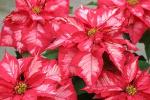COLUMBIA, Mo. – So far, it’s a bad hay year. Cool weather, lack of sun and dry soil slowed grass growth.
Dry matter per acre is about one-third of what we expect this time of year, says Rob Kallenbach, University of Missouri Extension forage agronomist.
He spoke to regional extension specialists in a weekly teleconference.
“There’s hope,” he adds. “With warmth and rain, we can still grow lots of good hay. It will take management to make up for lost growth, however.”
Plentiful seed heads are a signal that pastures or hayfields are not producing, Kallenbach says. For grass quality and quantity, the seed-head tiller should be nipped early from each grass plant. That can be done with management-intensive grazing, which opens a small amount of pasture paddock every day or two.
If seed heads emerge, that signals the end of vegetative growth and start of reproduction. Leaf growth stops and nutrients flow from leaf to seeds.
“For grass to grow again, seed heads must be mowed off,” Kallenbach says. “This time of year, that means making hay.”
Cattle won’t eat seed heads unless forced to do so.
In hay cut now, seed heads will make up a high percentage of the bales. The cool spring reduced leaf growth. However, seed stem production comes on strong. Day length triggers seed set, not temperature.
After seeds are removed, grass restarts leaf growth. By cutting bad hay now, quality hay growth can restart, the forage specialist says.
Normally, Kallenbach does not favor application of nitrogen fertilizer in spring. In normal weather, the nitrogen produces more grass than cattle can graze. When cattle can’t keep up, grass matures and seeds form.
However, since grass growth was slow this year, some nitrogen might help. After mature hay is cut, apply up to 50 pounds of N per acre on the stubble. That can boost yields.
“Do the math,” Kallenbach says. “This time of year, with normal weather, one pound of N makes 15 pounds of forage dry matter.”
The economics work if 50 pounds of N costs less than the value a half big bale of hay.
Without management and further delays in haying, there will be only low-nutrient hay to feed next winter.
By now the first cutting of alfalfa should be baled and in a hay shed, Kallenbach says. “If it’s not cut, do so. That will improve the second-cutting alfalfa.”
Alfalfa makes good supplement for poor fescue hay to be fed next winter, Kallenbach says.
Although he has few takers for his idea, Kallenbach continues to urge making grass hay the first week of May. That cuts seed heads before they emerge. That makes better feed in many ways.
Kallenbach remains a realist. He knows that in early May haymaking competes with soybean planting. So he’d be satisfied if haymaking tools are used as soon as the bean planter is unhooked.
In his research, Kallenbach measures grass paddock growth at the MU College of Agriculture, Food and Natural Resources.
Read more http://extension.missouri.edu/news/DisplayStory.aspx?N=2223




